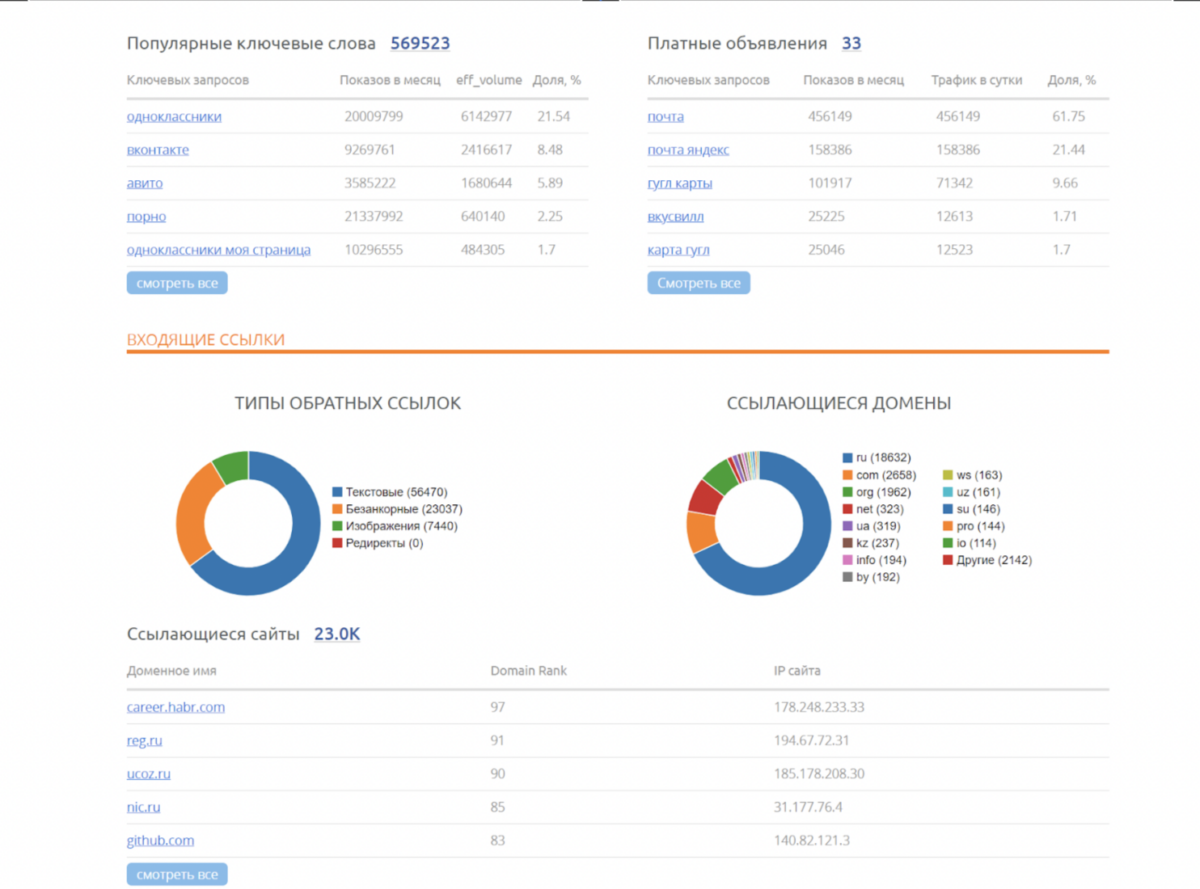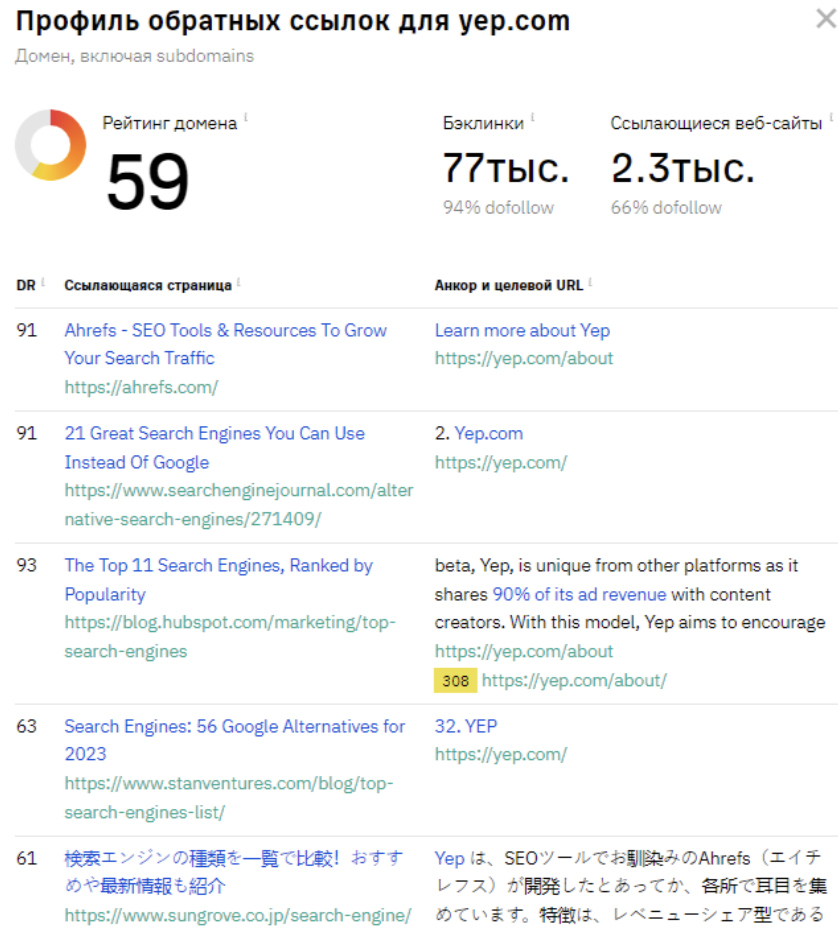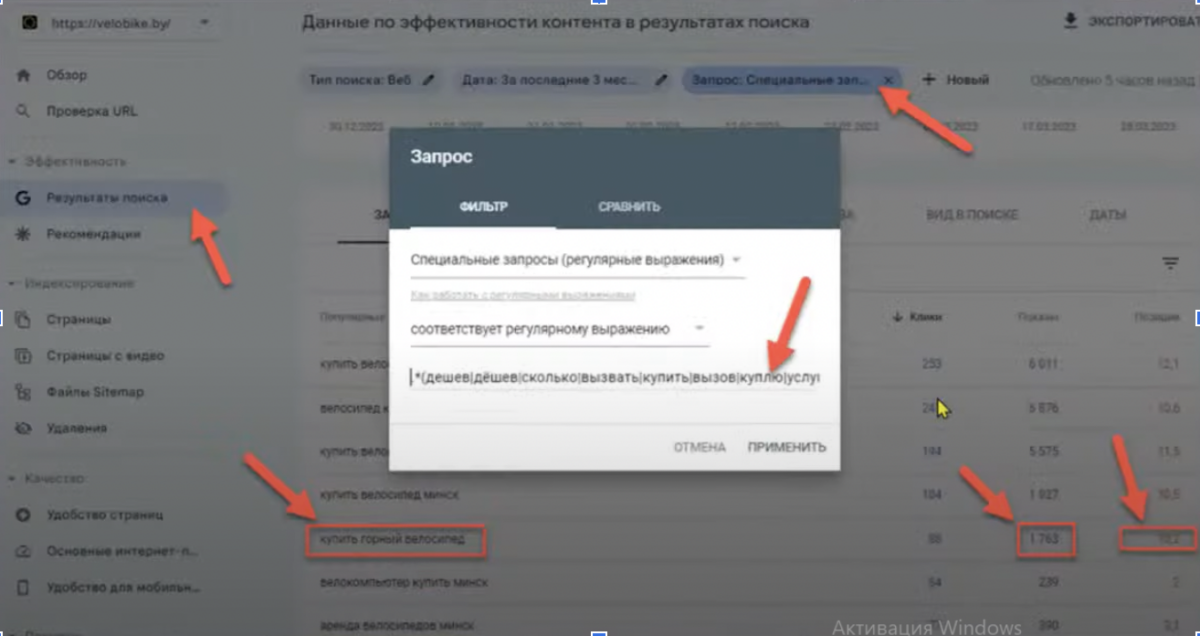
A – Z of building a link profile on the site
If you are monetizing your own site, then as traffic increases, your income will grow too. Work on developing the site requires a set of processes for internal and external optimization. Today, however, we are going to be talking about increasing link volume – one of the most important stages of search engine promotion.
Link promotion or link building – what is it?
The set of processes associated with enhancing the natural link volume is referred to as link building. This means acquiring external links to the resource you’re promoting in variety of ways. We’ll talk about this later.
Linkbuilding addresses the following objectives:
- increases brand/product awareness;
- has a positive influence on trust (an indicator of the “trust” of search engines to an online resource);
- contributes to attracting referral traffic;
- helps the site grow and move up in the search results.
Before you start link promotion, there are two things you need to understand: firstly, not all links will be useful for your site, and secondly, if your site is really bad, then link building can have the opposite effect.
If you think that the only thing that matters is the number of links, then you’re mistaken. This strategy made sense back in 2012, before Penguin. After the introduction of the Google filter, a lot of sites lost their positions, because the filter revealed low-quality links and considered them spam. “Minusinsk” by Yandex and “Penguin” by Google are both popular search engine algorithms which recognize low-quality external links, a surplus of anchors, rapid growth of link building volume and SEO links.
Clever link building is impossible without a thorough analysis of donors and competitors’ link volume. Remember, it’s much easier to place a link, rather than to sort out the consequences later.
How to start a link promotion
In practice, link promotion strategy is determined by the size of the budget. This sounds vital, but incorrect. Before you add links, you need to determine their quality and the optimum amount for your resource. No one will help you more than your competitors. You’ll be drinking plenty of coffee while you analyze the data from their link profiles. However, the result will end up acquiring an effective strategy, rather than a set of low-quality links and a search engine filter.
First, find 10-20 competitors based on different key queries. Next, identify points such things as the age of the resource, the number of linking domains, unique IP addresses which are open/closed for indexing, commercial and sponsored links.
Analyze in which countries competitors bought backlinks: how many, in what form (text/graphic) they are placed, their frequency, how many anchor links and which anchors they used. A thorough analysis will give you a complete picture of how many links you need, and the speed of link building which will be optimum for your resource.
Keep those services which will help you to build an average link profile of your competitors.
Semrush and Ahrefs will give you the most detailed picture. Free SPY-services provide limited information and fewer opportunities, but they are also often used. For example, this sort of site information can be obtained for free on megaindex:


There is also a free service from Ahrefs – ahrefs.com/en/backlink-checker, which will give that information:

In order to determined positions on the issue, you need to analyze the dynamics of building a link profile, i.e. how many backlinks competitors bought in the space of a month
After doing an analysis of the competitors, you need to evaluate your own reference profile. A lot of commercial links are just a direct path to pessimization. Having a large number of anchor links is also a bad thing. Search robots perceive them as spam. Crawlers treat anchorless links as natural links added by the site users themselves.
Use parsers, as well as Google Search Console, to see which pages lead to the links and anchors that Google takes into account.
Choice of donors
When you’ve established the average reference profile, you can proceed to the selection of the donor. There is no point in looking at the number of links from competitors. Most of them in any case are garbage, and you need to focus on quality. So when the site being promoted has 100 links, and the competitor has 1000, then +300 backlinks is the norm.
There are two ways to select donors:
- Use the services referred to above to collect information on competitors’ donors, and check whether links really exist.
- Select potential donors from the TOP of the organic search list for certain key requests.
All that remains is to collect all donor sites into a single table and weed out the bad ones. In this case, the first bad ones will be:
Unindexed and deindexed domains. You can find them in Screaming Frog SEO Spider. First, count the number of pages in sitemap.xml. To do this, open the Mode – List tab in the “frog”, click Upload and add sitemap.xml from the robots.txt file. Compare the resulting number with the number of pages in the Google index. If there the number of indexed pages is much less than the number of pages in sitemap.xml, then the probability of an article with a link to the index will be low.
Donors with negative traffic dynamic. You can track it using the same parsers. As a rule, if traffic volumes fall sharply, this is most likely due to search engine algorithms. If the site isn’t kept up to date, then the volumes will fall more smoothly, but the dynamics will still be negative. It can be relatively inexpensive to publish on such resources. However, there is a high risk that the page will remain unindexed or will be deindexed after the next global update of Google
“Weak” domains are adult resources with a small number of links.
Sites with a low-quality link profile are those with a lot of incoming links and few linking domains.
Sites infected with malware or hacked. They are more likely to drop out of the index and are unlikely to return.
Low-quality donors can even be visually identified:
1. Watch out for a long domain name or numbers in the domain. There is a high probability that this is a doorway.
2. Domain zones, most of which are spam. For example, such as .rest, .top,
etc. 3. If you look at the layout, the lack of CSS and JavaScript is a bad sign.
4. Clumsy design, terrible usability, lack of navigation.
Analyze the sites for dozens of parameters, then most donors “flee”.
Filtering donor sites
The easiest way to filter out bad sites is to remove second-level and higher domains from the donor list. In order to do this, go to the autofilter settings, set lines containing …. etc. and immediately remove the ones you find from the list, and then we remove one point and do the same again. So we repeat this until only the second-level domains remain in the list for Runet. For bourgeois.net there may be third-level domains.
The main web rankings
The main metrics used to additionally filter out potential donors:
- CF (Citation Flow) – determined using Majestic rating, shows the influence of the domain, based on the number of sites linking to it.
- TF (Trust Flow) – a site evaluation criterion based on the quality of backlinks. The more trust links, the higher this metric.
- If CF is significantly higher than TF, it means that the link profile of the resource consists of low-quality links.
- DA (Domain Authority) – determines the difficulty of site ranking in Google on a scale from 1 to 100.
- DR (Domain Rating) – domain quality indicator from 0 to 100, based on its link weight.
- PR (PageRank) is a link ranking algorithm in which the weight of a page is calculated based on the number and authority of resources linking to it. So, the value of the page is determined on a scale from 0 to 10. The difference between 0 and 1 will be much less than between 7 and 8, since the indicator is calculated on a logarithmic scale. PR is calculated separately for each page.
Let’s recall that on April 16, 2016, Google reset PR from all sites and officially cancelled it. The patent expired in 2018, but PageRank still exists as a trademark.
Today, many SEOs use the classic Open Page Rank service. It calculates PR according to the old formula (but, unfortunately, only for the main page of the site). Nevertheless, it will give you an informative indicator of the quality of the donor, taking into account the number of links, the distance from the root domains, and the attenuation coefficient.
Combine all donor data into an excel table. Be sure to add the URLs where your competitors are located. It’s important to monitor whether their link was indexed, to parse metadata, and to take a look at the articles.
After you have recorded the IP domains in the table, you can easily monitor the reference grids. For the sake of convenience, add the donor’s contact details and prices. Use Link Detective to find out the approximate prices.
All that remains is to sort all the remaining donors by source type: link exchanges, catalogs, forums, social networks, platforms with questions and answers, etc. Why is this necessary? Then you need to competently build an external promotion strategy that depends on the type of links.
Further you have to work with them manually. Don’t be in so much of a rush that you carelessly leave a link on an unmoderated site. No, we don’t have anything against crowd marketing. Indeed activity on forums and reviewers could really make the link profile more diverse. However, this can actually lead to an algorithmic or even manual fine, since crowd marketing a priori contradicts Google’s spam policy.
It is highly desirable that your site contain no more than 20% of commercial anchors, and only with trusted donors.
Therefore, if you use this method, it’s better to promote brand anchors or diluted anchors.
It’s best of all to use outreach. This is also an area of crowd marketing which involves an agreement with the site owner on advertising or mentioning the brand. At the same time, outreach does not resemble spam and is in fact turns more effective than crowd marketing.
Rental or Permanent Links?
Permanent links for external promotion are paid for once only, while rental links imply a monthly payment. We don’t recommend the second type, as rental links:
- may not correspond to the subject of the resource;
- may be placed in a sidebar or footer;
- may be adjacent to other links, or topics which are undesirable for you.
Permanent links are also conditional, since no one can guarantee their “permanence”. The site owner can stop paying for hosting or resell the site. However, with a competent approach, they can look natural and promote growth. So the answer is clear. Choose permanent (albeit more expensive), if you have high hopes for your project and you’re serious about it.
Why do rentals exist then? For those who have a small budget or the site is of no great value for the owner.
Choice of anchor
There are many strategies, but the starting points for promoting the anchor can be found in the “Performance” section of the Google Search Console.
Another way is to find transactional or commercial anchors where the site is already ranking for and use them. The better these inquiries are, the more the user is likely to make a purchase by clicking on such an inquiry. However, as we said, such links should make up no more than 20% of the entire reference profile.
If you want to find transactional queries, you can perform actions on the following system:

If the site is young, and the Google Search Console panel is empty, you can take anchors from the key queries used in the metadata of the promoted URL. Another working option is to put a lot of links to the main page of the site and use brand anchors.
Common mistakes in linkbuilding
Finally, we want to warn you against such mistakes:
1. Do not use link networks – search engines “burn” them instantly. These resources are created for the purpose of selling links. They include page mirrors, domains on the same IP address, domains with the same Google Analytic, AdSense, Yandex Metrics identifiers, subdomains of the third level – subdomains of the same root domain.
2. Reject spam links: in the “weak” directories of links with minimum description and profiles. Google also considers end-to-end links in the footer and side menu as spam links, as well as links with commercial anchors in comments on forums, under articles, in profile captions, etc., as we have already discussed earlier.
3. Do not allow the respamming of the anchors you’re using to promote yourself. Be sure to use diluted anchors.
4. Avoid “footprints” of advertising and sponsors – for example, “advertising rights” and “sponsored content”.
Conclusion
That’s all you need to know about external optimization at least at the initial stage of self-promotion of your resource. Remember that SEO is not a single algorithm you can use to bring your site to the TOP. It is a continuous dynamic process: individual and extremely sensitive to external factors.
Time to start earning!
